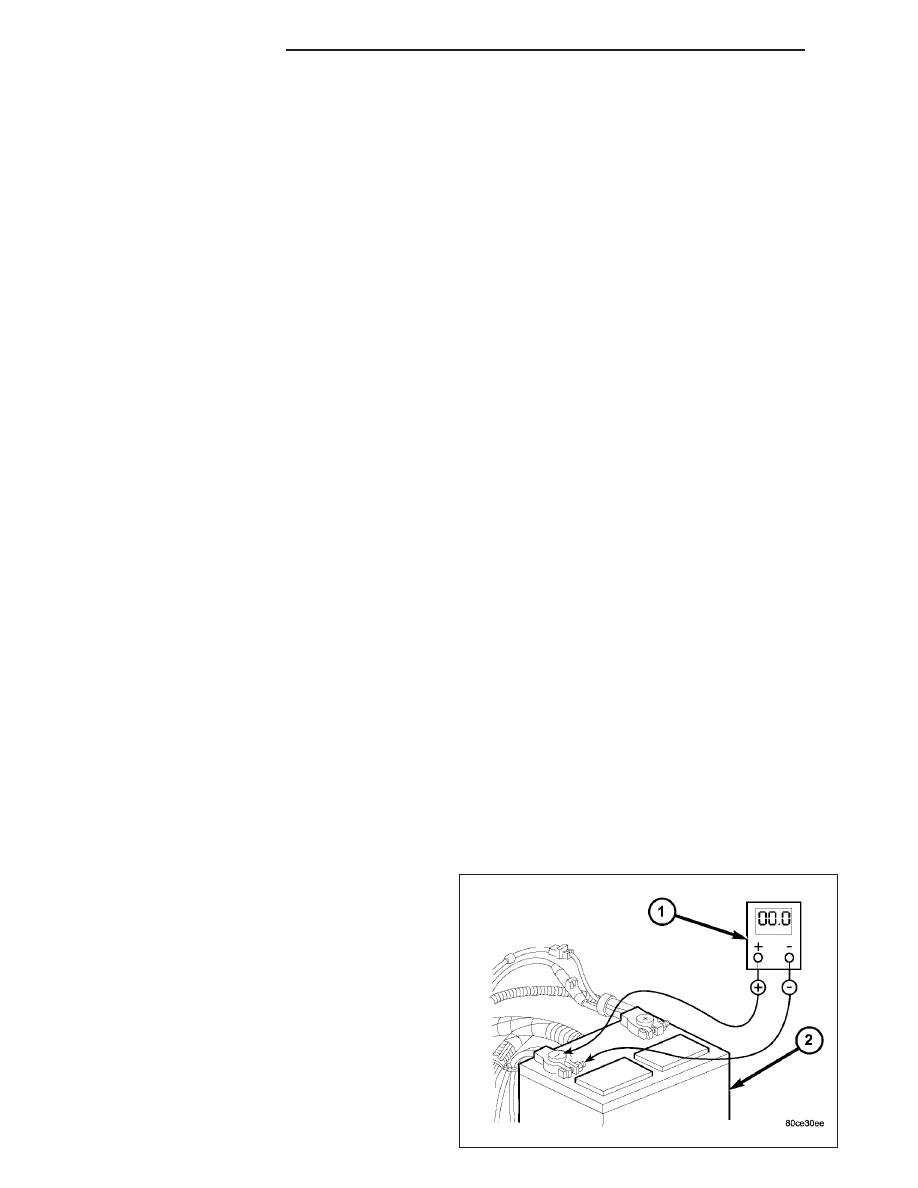Jeep Liberty KJ. Manual - part 28

WARNING: If equipped with diesel engine, attempt to start engine a few times before proceeding with fol-
lowing step.
6. Rotate and hold ignition switch in Start position. Note cranking voltage and current (amperage) draw readings
shown on volt-ampere tester.
a. If voltage reads below 9.6 volts, refer to Starter Motor in Diagnosis and Testing. If starter motor is OK, refer
to Engine Diagnosis in 9, Engine for further testing of engine. If starter motor is not OK, replace faulty
starter motor.
b. If voltage reads above 9.6 volts and current (amperage) draw reads below specifications, refer to Feed Cir-
cuit Test in this section.
c. If voltage reads 12.5 volts or greater and starter motor does not turn, refer to Control Circuit Testing in this
section.
d. If voltage reads 12.5 volts or greater and starter motor turns very slowly, refer to Feed Circuit Test in this
section.
NOTE: A cold engine will increase starter current (amperage) draw reading, and reduce battery voltage read-
ing.
FEED CIRCUIT TEST
The starter feed circuit test (voltage drop method) will determine if there is excessive resistance in high-amperage
feed circuit. For complete starter wiring circuit diagrams, refer 8, Wiring Diagrams.
When performing these tests, it is important to remember that voltage drop is giving an indication of resistance
between two points at which voltmeter probes are attached.
Example: When testing resistance of positive battery cable, touch voltmeter leads to positive battery cable clamp
and cable connector at starter solenoid. If you probe positive battery terminal post and cable connector at starter
solenoid, you are reading combined voltage drop in positive battery cable clamp-to-terminal post connection and
positive battery cable.
The following operation will require a voltmeter accurate to 1/10 (0.10) volt. Before performing tests, be certain that
following procedures are accomplished:
•
Battery is fully-charged and load-tested. Refer to Battery in 8, Battery.
•
Fully engage parking brake.
•
If equipped with manual transmission, place gearshift selector lever in Neutral position and block clutch pedal
in fully depressed position. If equipped with automatic transmission, place gearshift selector lever in Park posi-
tion.
•
Verify that all lamps and accessories are turned off.
•
To prevent a gasoline engine from starting, remove Automatic ShutDown (ASD) relay. To prevent a diesel
engine from starting, remove Fuel Pump Relay. These relays are located in Power Distribution Center (PDC).
Refer to label on PDC cover for relay location.
1. Connect positive lead of voltmeter (1) to negative
battery cable terminal post. Connect negative lead
of voltmeter to negative battery cable clamp.
Rotate and hold ignition switch in Start position.
Observe voltmeter (1). If voltage is detected, cor-
rect poor contact between cable clamp and termi-
nal post. Note: Certain diesel equipped models
use dual batteries. If equipped with dual battery
system, procedure must be performed twice,
once for each battery.
8F - 50
STARTING SYSTEM
KJ